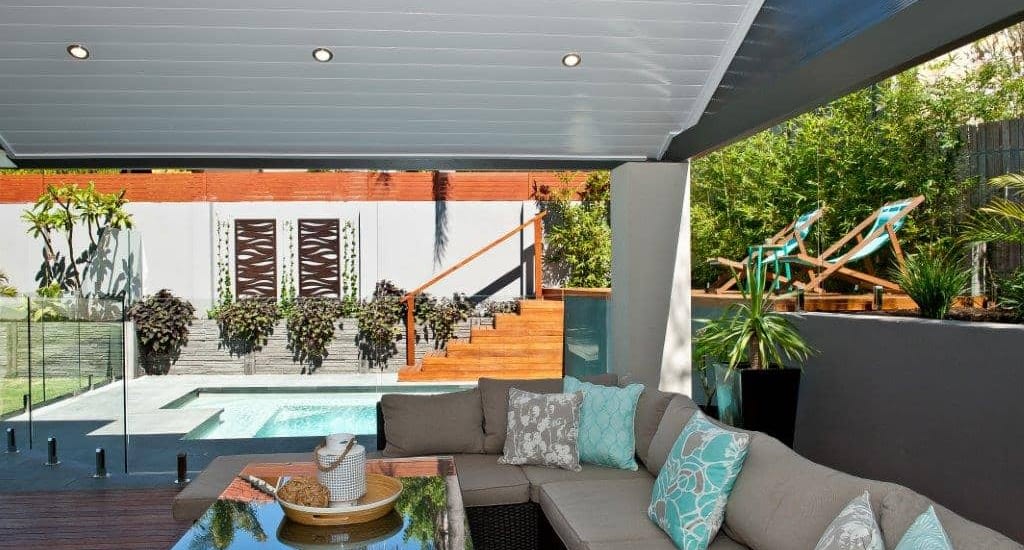- March 20, 2017
- Posted by: Bradford Retaining
- Category: Retaining

Retaining walls are first and foremost, functional in the realm of construction but they can also serve as a decorative feature in your yard. One of the major benefits of these walls is that they offer protection against soil erosion. They hold back unstable soil and prevent the ground from washing away. By preventing soil erosion and movement, retaining walls can protect the surrounding structures and buildings from possible damage. Retaining walls made of concrete or stone are extremely sturdy and long lasting. They are built to withstand storms, flooding, and major ground movements.
In addition to structural support, retaining walls are important for levelling off your property. If you have a steep block, it can be difficult to plant gardens and shrubs so a retaining wall provides additional gardening space to your landscape. By increasing the level areas for gardening, you also get some extra seating which enhances both the beauty and functionality of your home.
One reason of why they are so popular for aesthetic purposes is that they come in a vast variety of materials, colours, shapes and sizes. Constructing one of these structures can be a distinct addition to a homeowner’s landscape.
Where Should They Be Built?
A landscape that is flat and level likely has no need for a retaining wall. Wind is the cause of erosion with flat land, not water. Therefore, most walls are built in one of two scenarios. The first is on sloped surfaces, whether to create a tiered effect or to prevent erosion. These walls are typically more creative and decorative. Another location for installation is on a sloped incline near a water source like a river. Much of the soil that gets washed away from a water’s edge during heavy rain is caused by runoff flowing downhill. Erosion in this case, is more likely to occur on banks without plant life, which can hold the soil together. Thus, a retaining wall can help maintain the level of ground near an embankment.
Choosing the Materials and Designing the Wall
Once you have decided on placement, landowners have a variety of options for the material of a retaining wall. They can be made from brick, concrete, concrete, stone, steel or natural rocks. Other materials can be used depending on how creative the wall design is. All of the above materials will provide various levels of strength and durability. In situations that require a significant amount of structural strength, poured concrete is probably the best choice. Here at Bradford Retaining, we specialise in concrete panel and post retaining walls.
The next step is designing the retaining wall. Again, these can be as creative as the landowner sees fit. The design must primarily take into account whether the wall is meant for a structural or decorative function. In addition, the design should consider area size, the required height and the location. Some design options include concave curves, straight lines, curved lines, zigzags and convex curves. To learn more about our different designs, head to this page or get in touch with one of our consultants.
Hire a Professional
When considering retaining walls for your home, one of the main questions is whether you will build these structures yourself, or if you want to hire somebody else to do it for you. Building your own walls can be a fulfilling and rewarding task, but, it is a complete job that requires proper knowledge, specialised skills, and the right tools. Therefore, it is best to have the input of a professional who has extensive knowledge of geography, materials and any building code regulations.
If you’d like to tackle the task of building your own retaining wall, have a read of our DIY retaining wall options. You can rely on our tried and tested walls whilst installing them yourself!
Landscaping is not an easy job. The work may involve hours, days or even months. Hiring a professional landscaping company will give you a peace of mind, as they will handle everything from pavers to the landscape supply to choosing the right materials.
A retaining wall can be vital for backyard remodelling and landscape design. However, a poorly constructed one can lean, crack and cause even more damage. Choosing the right materials and constructing the wall properly are the two most important steps. If you’re interested in creating a retaining wall on your property, contact us for assistance from design to execution.